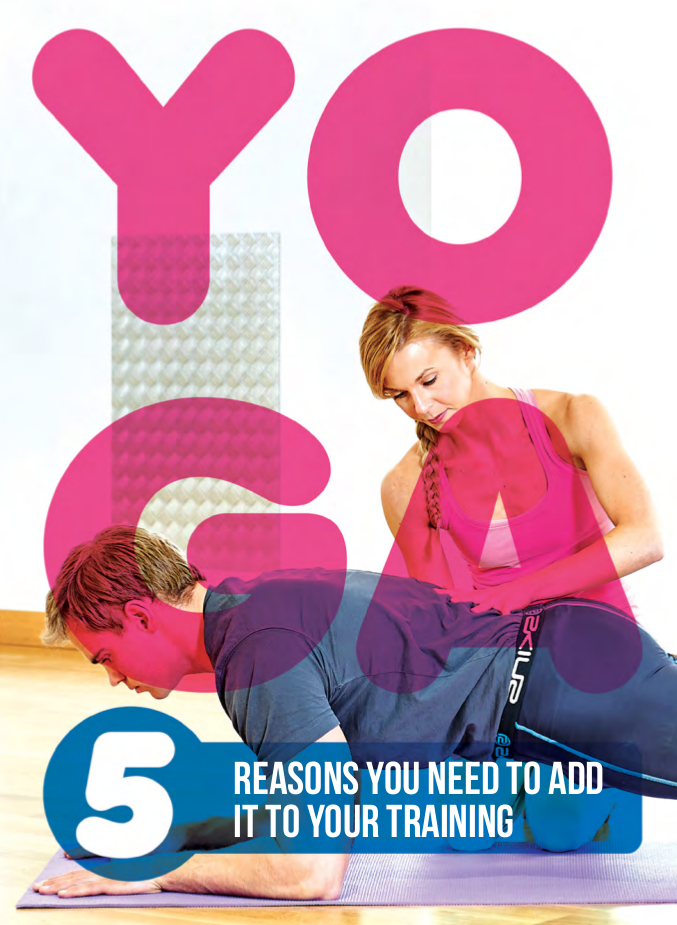BESTFIT Issue 18 – Yoga
BESTFIT Issue 18 – Yoga
Share
 Whether your aim is to touch your toes, squat deeper, or get leaner abs, you can get it all on the yoga mat… Here’s how.
Whether your aim is to touch your toes, squat deeper, or get leaner abs, you can get it all on the yoga mat… Here’s how.
Words by Nicola Jane Hobbs
Contrary to what you might believe, yoga is not just about sitting around making ‘om-ing’ noises. It builds strength, increases flexibility and boosts performance, making it the perfect addition to your training regime. as we kick off our yoga special, here are five reasons why you need yoga in your life.
Improves Overall Fitness
Yoga achieves results because it uses the whole body in each pose. It includes compound movements that are extremely effective for gains in strength, power, balance and coordination. Numerous joints and muscles are engaged in each pose and movement, which builds stability in your core as well as promoting strength improvements throughout the whole body.
Yoga also combines strength and cardio training, meaning you can improve both aerobic and anaerobic fitness in one workout. Dynamic flows get your heart rate up, whilst challenging poses encourage muscle and strength development.
“Numerous joints and muscles are engaged in each pose and movement, which builds stability in your core”
Aids Fat Loss
Yoga should be at the core of your exercise regime if you want to lose fat. As a form of resistance training yoga builds muscle, burns fat and boosts the metabolism. It is a myth that steady-state cardio is the best way to burn calories. You don’t have to spend hours on a treadmill, cycle hundreds of miles or puff and pant your way through daily aerobics classes to get lean.
Whereas aerobic activity predominantly burns calories only when you are exercising, high-intensity yoga oxidises fat for a long time after your workout in order to restore depleted energy and regain homeostasis in the body.
Even gentle yoga enhances fat-loss by reducing cortisol levels (the hormone responsible for stress, which is known to increase abdominal fat). And, as well as the direct fat loss, you may find the body awareness you develop through yoga helps you fight food cravings and inspires you to follow a healthy eating plan.
Increase Flexibility
Flexibility is commonly neglected in many people’s fitness regimes. After a hard workout, stretching is often the last thing on your mind as you race to work, rush to pick up the kids or dash home to cook dinner.
Yoga is one way that training for strength and flexibility can be done simultaneously. By using eccentric muscle contractions and moving each joint through its full range of movement, you gain strength without shortening the muscle or compromising mobility.
Flexibility, strength and relaxation are intimately related. As you relax through yoga, you will reduce muscular tension and create more length in your tissues. As you create length in your muscles and gain flexibility, you will extend your range of motion so you can squat deeper, lunge wider, and train with better posture and in greater alignment.
Builds Muscle and Strength
You don’t need dumbbells to build muscle and get strong. All you need is your body, the will to train hard and the discipline to physically push yourself several times a week. Yoga teaches you to master basic postures and movement patterns before adding resistance and challenging you with more advanced poses and exercises as a form of progressive overload.
One of the key areas yoga builds in terms of muscular strength is the core. This is more than just your abs and obliques (although developing a sixpack is a nice by-product) and involves virtually every muscle in your body besides your limbs. Your core is challenged in every yoga pose to build strength and stability and help you perform better during training and in daily life.
Prevents Injury
Yoga is one of the best ways to prevent aches and pains and the variety of styles mean that it is safe for nearly every exerciser. Simple restorative yoga poses can even be used as a form of rehabilitation from injury.
As well as making your body stronger and suppler to reduce your chances of damaging a muscle or connective tissue, yoga also increases body awareness so you are more likely to notice any small niggles or areas of tightness that could lead to bigger injuries in the future.
Many athletes now use yoga so they can avoid common sports injuries such as plantar fasciitis (an overuse injury characterised by pain on the underside of the foot), IT-band syndrome (a common cause of knee pain), hamstring pulls, ankle sprains and rotator cuff tears.














FOLLOW BESTFIT